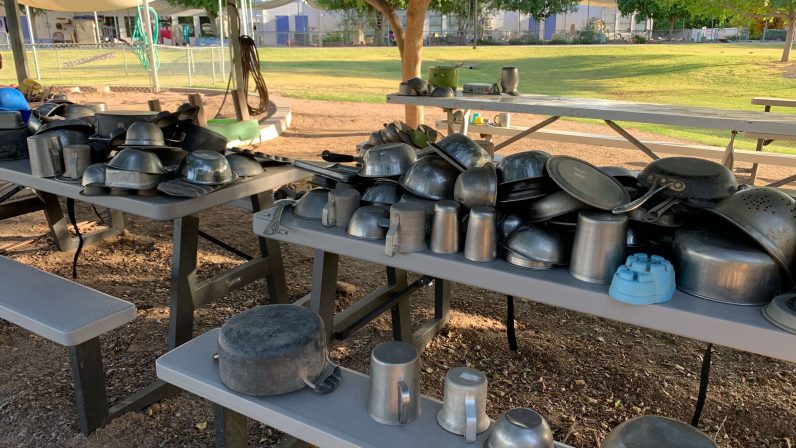These past several weeks Bill has showed up at school every day (except a few Sundays) to burn weeds, trim trees, tidy up the playground, paint classrooms, and organize the sand circle area. He sorted and washed all the spoons, bowls, and pots and pans. He’s used this time to make the space ready to receive the children when it’s time to return to school.
As we move toward the end of this highly irregular version of our regular school year, everyone, including Bill, is focused on what’s best for the kids. Teachers have adapted their approach to distance learning based on what seems to be most appealing to the children. For example, early on in the younger classes, we thought it was most important to reach out to kids through 1:1 sessions. For many weeks that was a significant emphasis. Then, as time went on, the children seemed to need more interaction with peers. The teachers adapted. Toddler group sessions have lately become live classes with specials teachers. Preschool sessions have evolved into group Zoom sessions where kids can share toys, work on building projects virtually side by side with peers, and do art projects simultaneously.
For the elementary students, there have also been shifts. K-1 students have focused their group times to leading house tours for their friends. Children take turns showing their bedrooms, pointing out family members and pets, and showcasing a favorite place in their homes. They share their addresses, which have been incorporated into a math lesson. Additionally, children who are led on the tours write lists of things they noticed about each person’s tour. A few highlights have been one family’s backyard zip line, another’s trampoline, and still another child’s slide in their basement. Up next for K-1 students will be a virtual talent show.
First and second graders are shifting their academic work to individual projects on different countries. Each child is required to do research on the country, then conduct a related cooking project. One lively second grader, who studied Slovenia, described her experience of making small human figures out of sweet bread. Evidently they are part of the St. Nicholas Day practices in that country. Once their research is completed, each child will assemble his or her information into a book, and/or make a presentation to the class.
Third and fourth graders have transitioned part of their work to small group special interests, in part to support much needed social interactions. Each group gathers virtually once a week to discuss science experiments, journaling/scrapbooking, or writing comics, with each student creating an individual project. Some children have naturally paired up to work collaboratively. This shift promotes social interactions as well as creative expression.
As we’ve talked with lead teachers this past week, it seems like everyone is deeply paying attention to what seems best for children. It’s what we do anyway, but these extraordinary times are asking us to be even more vigilant with utilizing our emergent curriculum model. Fortunately we have the teaching staff to implement it in true Awakening Seed style.

